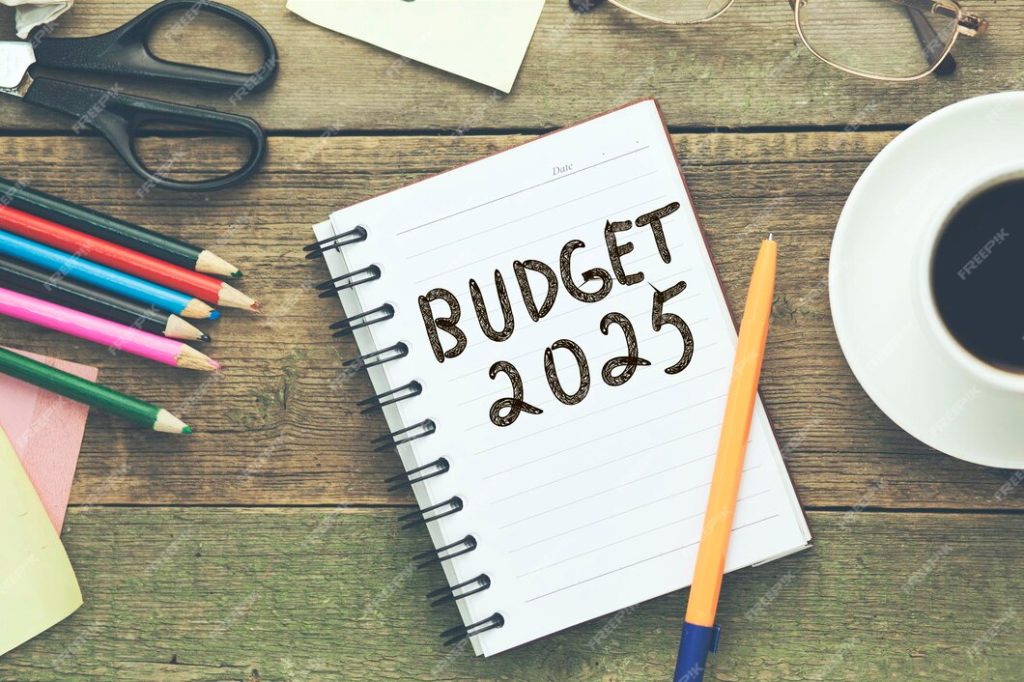
Take into consideration this: It’s the highest of the month, and in addition you’re gazing your checking account, questioning the place your whole money went. The espresso runs, that impulse Amazon purchase, the takeout you swore was a one-time cope with—all of it gives up. I’ve been there. Just some years prior to now, I found myself scraping by, paycheck to paycheck, with no clue one of the best ways to get ahead. Then, I discovered the magic of value vary planning. It wasn’t almost numbers; it was about freedom, administration, and ultimately understanding my financial story.
Funds planning isn’t engaging. It’s not the stuff of blockbuster movies or banquet chatter. Nonetheless it’s a game-changer—one which will flip chaos into readability and wishes into actuality. Whether or not or not you’re saving for a visit, paying off debt, or just attempting to stop the paycheck-to-paycheck cycle, a value vary planner is your roadmap. On this data, we’ll dive deep into what value vary planning is, why it points, one of the best ways to make it provide the outcomes you need, and even one of the best ways to profit from the course of. Let’s get started!
What Is Funds Planning, Really?
At its core, value vary planning is about deciding the place your money goes sooner than it has a chance to find out for you. It’s a proactive plan that tracks your income, payments, and financial targets. Contemplate it like a GPS in your funds—with out it, you’re merely driving blind, hoping you’ll end up someplace good.
I used to suppose budgeting was for people who’ve been “harmful with money.” Appears, it’s for anyone who wishes to be good with money. Primarily based on a analysis by the CFPB, households with a value vary normally have a tendency to actually really feel financially protected, even when their income isn’t sky-high. It’s not about restriction—it’s about intention.
A value vary planner may be as simple as a pocket guide or as high-tech as an app like YNAB (You Need A Funds). Irrespective of variety it takes, it’s your instrument to align your spending alongside together with your values. In a position to see the best way it really works? Let’s break it down.
Why Funds Planning Points: The Massive Picture
Picture this: You’re at a buffet with a tiny plate. Chances are you’ll’t pile on each half, in order that you choose what points most—maybe the roast hen over the wilted salad. Budgeting is like that. Your income is the plate, and in addition you get to pick out what fills it.
Proper right here’s why it’s a large deal:
- Administration Over Chaos: With no plan, money slips by way of your fingers. A value vary gives you the reins.
- Debt Demolition: A Federal Reserve report displays U.S. household debt hit $17 trillion in 2023. Budgeting helps you chip away at it—or steer clear of it altogether.
- Dream Gasoline: Want a house? A go to to Bali? A value vary turns “someday” into “this 12 months.”
- Peace of Ideas: Realizing you’ll cope with an emergency with out panic? Priceless.
I found this the arduous method. A shock automotive restore as quickly as left me scrambling for cash. If I’d had a value vary with an emergency fund, I’d have slept larger—and prevented that $200 late cost on my rent.
Types of Funds Planners: Discovering Your Match
Not all value vary planners are created equal. The easiest one for you relies upon your character, targets, and life-style. Let’s uncover essentially the most well-liked selections.
1. The 50/30/20 Rule
This fundamental, popularized by Senator Elizabeth Warren in her information All Your Worth, splits your after-tax income like this:
- 50% for desires (rent, groceries, utilities)
- 30% for wishes (consuming out, Netflix)
- 20% for monetary financial savings or debt compensation
Why It Works: It’s straightforward and versatile. I tried it after I first started budgeting, and it gave me building with out feeling like a straitjacket. Strive NerdWallet’s data for a deeper dive.
2. Zero-Based Budgeting
Every dollar will get a job—funds, monetary financial savings, even that $5 latte—until you hit zero. Dave Ramsey swears by this system.
Why It Works: It forces you to prioritize. I used this to repay $3,000 in financial institution card debt. It’s intense nonetheless environment friendly.
3. Envelope System
Earlier-school nonetheless gold. You allocate cash to envelopes (rent, groceries, pleasing) and stop spending after they’re empty.
Why It Works: It’s tactile and retains overspending in look at. Wonderful for those who occur to’re a hands-on type.
4. Digital Funds Apps
Devices like Mint or PocketGuard sync alongside together with your accounts, monitor spending, and ship alerts.
Why It Works: Tech-savvy? That’s your jam. I switched to YNAB remaining 12 months, and its real-time updates saved me from overspending on trip presents.
How one can Create Your Funds Planner: A Step-by-Step Info
In a position to assemble your private? Seize a espresso (or tea—your value vary, your pointers) and let’s try this.
Step 1: Know Your Income
Start alongside together with your take-home pay after taxes. Embody side hustles, freelance gigs, or that Etsy retailer you’ve been meaning to scale up.
Step 2: File Your Payments
Break them into:
- Fixed: Lease, automotive charge, subscriptions
- Variable: Groceries, gas, leisure
- Irregular: Presents, automotive repairs
Skilled tip: Confirm your monetary establishment statements for the ultimate three months to determine patterns.
Step 3: Set Targets
What’s your “why”? Mine was a cross-country freeway journey. Yours is maybe debt freedom or a rainy-day fund. Write it down—it’s your North Star.
Step 4: Select a Method
Choose a budgeting kind from above. Check out it for a month and tweak as wished.
Step 5: Monitor and Regulate
Use a spreadsheet, app, or pocket guide. Overview weekly. Overspent on consuming out? Cut back subsequent week. Life’s messy—your value vary can flex.
For a free template, try Vertex42’s value vary spreadsheet. It’s a lifesaver.
Comparability Desk: Funds Planner Methods at a Look
| Method | Most interesting For | Execs | Cons | Devices/Property |
|---|---|---|---|---|
| 50/30/20 Rule | Newcomers, flexibility lovers | Simple to start out out, balanced | A lot much less detail-oriented | NerdWallet Calculator |
| Zero-Based Budgeting | Ingredient freaks, debt busters | Complete administration, goal-driven | Time-intensive | EveryDollar App |
| Envelope System | Cash lovers, overspenders | Seen, strict limits | Inconvenient for digital funds | GoodBudget |
| Digital Apps | Tech followers | Automated, real-time monitoring | Subscription costs | YNAB |
Educated Insights: What the Execs Say
I reached out to financial planner Sarah Johnson, CFP, who shared this gem: “Budgeting isn’t about saying no—it’s about saying certain to what points most. Start small, rejoice wins, and assemble momentum.” She recommends pairing your value vary with an accountability affiliate—anyone to cheer you on (or title you out).
Within the meantime, behavioral economist Dr. Michael Norton, via his Harvard evaluation, found that spending on experiences (like a dwell efficiency) boosts happiness larger than stuff. So, tweak your value vary to reflect your pleasure.
Precise-Life Funds Hacks: Recommendations That Stick
Proper right here’s what I’ve found from trial, error, and a few too many takeout orders:
- The 24-Hour Rule: Tempted by a sale? Wait a day. I’ve saved tons of skipping impulse buys.
- Meal Prep Sundays: Cooking as quickly as each week slashed my meals value vary by 30%. Try Funds Bytes for inexpensive, tasty recipes.
- Spherical-Up Monetary financial savings: Apps like Acorns spherical up purchases and make investments the change. It’s painless saving.
- Negotiate Funds: I known as my net provider and shaved $15 off my month-to-month bill. Every dollar counts.
Overcoming Budgeting Roadblocks
Let’s be precise—budgeting isn’t on a regular basis clear crusing. Proper right here’s one of the best ways to type out frequent hurdles:
- Irregular Income: Freelancers, use remaining month’s low as your baseline and save the extras. Freelancers Union has good concepts.
- Stunning Payments: Assemble a $500 emergency fund first, then scale up.
- Funds Burnout: Keep it pleasing—cope with your self inside limits. I value vary $20 month-to-month for a “me” splurge.
FAQ: Your Funds Planner Questions Answered
Q: How normally must I exchange my value vary?
A: Month-to-month is correct, nonetheless tweak weekly for those who occur to’re new or your income fluctuates.
Q: Can I value vary with a low income?
A: Utterly. Give consideration to desires first, then small monetary financial savings. Even $10 a month builds the habits.
Q: What if I hate monitoring every penny?
A: Try a neater method like 50/30/20 or automate with an app.
Q: How do I persist with it long-term?
A: Tie it to a goal you’re obsessive about. Seen reminders (like a go to image) help too.
Conclusion: Your Funds, Your Power
Funds planning isn’t about perfection—it’s about progress. My first value vary was a large number: I forgot subscriptions, underestimated groceries, and splurged on a jacket I didn’t need. Nevertheless each month obtained less complicated. Instantly, I’ve obtained a cushty emergency fund, zero financial institution card debt, and a go to to New Orleans booked for subsequent summer season. That’s the ability of a value vary planner.
Start small. Select a means, monitor for each week, and see the place it takes you. Presumably you’ll uncover a hidden leak (goodbye, unused health middle membership) or discover you’ll afford that issue you’ve been eyeing. This isn’t almost money—it’s about rewriting your story, one intentional dollar at a time.
What’s the subsequent transfer? Seize a pocket guide, receive an app, or just jot your income and payments in your phone. You’ve obtained this. And everytime you’re sipping cocktails on that dream journey—or just sleeping larger at evening time—you’ll thank your self for starting proper this second.
